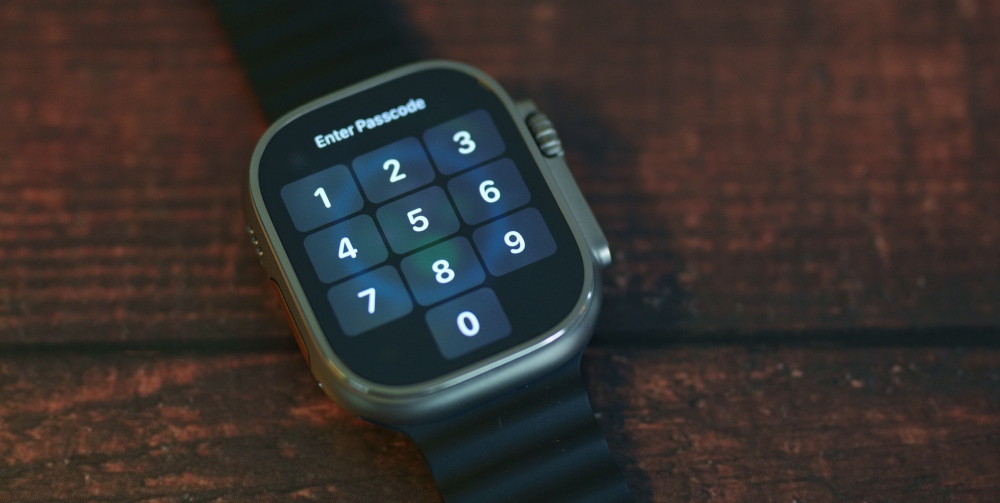
What Is a Data Breach and How to Prevent It
All
A Data breach is one of the many attacks that can threaten your organisation’s network and break through your cyber security architecture.
Data breaches can be internal and external hence why it is so important to take the appropriate measures to keep your data safe from unauthorised access.
Anyone can be at risk of a data breach, whether you are part of your own individual network, or part of a larger organisations network, therefore it’s important to know exactly how these attacks can damage your data.
In this blog post we will outline how data breaches occur, the damage they can potentially cause, and how to avoid becoming a victim of one of these attacks.
So, let’s get started with a detailed definition.
What Is a Data Breach?
Put simply a data breach is a security violation where protected or confidential data is accessed by an unauthorised person.
Real damage is possible through these breaches as malicious hackers tend to have a list of steps they follow in order to carry out a successful attack.
Firstly, attackers will research victims and seek out the vulnerabilities in their network, this is classed as the planning stage.
Then once hackers have identified and learnt the weak points of their victims, they develop a campaign. This campaign can be anything from an unsafe email to a suspicious link, all of which contain malware.
As soon as a victim carries out an action such as clicking a link or opening an email, the attackers have gained entry into the network.
At this point in the attack malicious intruders then have the freedom to search for the data they are looking for which they can view, copy, and even transmit to another network.
Unfortunately, data breaches are not time restricted and therefore can last several months before they are complete, or noticed by the victim.
Data breaches not only pose a threat to the victims, they can put others at risk if they don’t have the sufficient cyber security measures in place.
Therefore it’s essential to understand how these attacks occur and how to best prevent them from happening to you, or within your organisation.

How Do Data Breaches Happen?
More often than not, data breaches occur due to weakness in technology or user behaviour.
Weaknesses within devices are vulnerabilities that can be easily targeted by attackers, such as protection software that hasn’t been updated, and this therefore means devices aren’t secure.
As devices become more and more connectable, this means there are more opportunities for data to move in and out of a network particularly due to messaging systems or features such as Airdrop and video chat platforms.
Equally, attacks aren’t always conducted by an outsider, and sometimes employees or colleagues can accidentally, or purposefully access data they have not been authorised to view.
Therefore it is just as easy for a data breach to occur due to company flaws and poor security guidelines, as it is for an outside attacker to enter a network.
That being said, there are 4 main types of data breach that your organisation should be aware of to avoid becoming a victim to this type of attack.
Accidental Insider
As we previously mentioned, an accidental insider is a member of your workforce who views files containing confidential information but is unauthorised to do so.
Despite the ‘attacker’ being an employee or colleague, this is still considered a data breach as they have accessed files without permission from a higher level team member, or the owner of the files.
Malicious Insider
A malicious insider similarly to the accidental insider is an attacker from within your company who accesses important and confidential files and information.
This attacker may even have authorised access to these files, however their intent is malicious.
Malicious insiders purposely access and share the data to cause harm in some way either to a specific individual, or the entire organisation’s reputation.
Lost or Stolen Device
If you lose a device such as a mobile phone, laptop, tablet or external harddrive containing confidential files, you may further become a victim of a data breach.
If files are left unlocked or unencrypted it is an easy task for a hacker to access and steal your files, and share the information they find as they wish.
Whether this is a company device or a personal one, sensitive information may go missing if it is not properly protected and this could damage both your reputation and the reputation of your organisation.
Malicious Criminals
Malicious criminals are the most common form of hacker, and they use a variety of hacking techniques to gain access to your network and steal information.
Popular methods used are Phishing, Brute Force Attacks, and the spreading of Malware.

Common Vulnerabilities To Be Aware Of
It is possible that when data breaches occur they are accidental and often mistakes within your organisation that can be remedied by changing credentials and access permissions.
However, it is more than likely that most attacks are going to be malicious so you need to be aware of your most prominent vulnerabilities and how to strengthen your network security.
Weak credentials
One of the most common vulnerabilities to be aware of is the strength of credentials within your organisation.
Using poor or weak username and password combinations makes it very easy for attackers to guess your login details and hack into your accounts.
This can be particularly dangerous if you use the same log-ins for various accounts for example your work and bank account, as this gives hackers access to a lot more of your personal and private information.
Third-Party Access
Malicious criminals will often use third-party vendors to access your network.
This means that hackers gain access through another organisation, which may be an email server or website plugin. They proceed to compromise the server security measures and therefore gain access to credentials and into a variety of networks.
Mobile Devices
Within organisations there is usually a mixture of both personal and company devices, particularly with the Bring Your Own Device scheme implemented by some companies, allowing employees to use their own devices at work.
However, this results in a larger amount of unsecured devices in the workplace and it is more likely applications containing malware will be downloaded, compared to on a company device.
Therefore, hackers gain access to personal devices and often company information through work emails and files on employees laptops or mobile phones.
How Much Damage Can a Data Breach Cause?
Some vulnerabilities within a network can be protected by changing passwords, or login details, however there can be larger consequences when other network gaps are infiltrated.
On a larger scale, identity theft can occur if hackers steal personal information, and it is possible for them to conduct fraud under your name.
Identity theft can ruin victims financially, and leave victims with a pile of legal issues to overcome down the line.
Equally, stolen data could potentially lead to the leaking of highly confidential information which could have devastating effects on the reputation of your organisation.
However, there are a variety of measures you can take to keep your data and your organisation safe.

How to Prevent a Data Breach
In order to avoid the damage data breaches can cause to your organisation, it is essential to have the right protection measures in place.
So, let’s dive into a few of the most important things you can do to prevent this kind of attack.
Limit Access to Valuable Data
Critical and confidential information within your network should be restricted to a small pool of employees who need access.
Most of the time it’s not necessary for everyone within the entire organisation to have access to the most important files and information, so it’s important to regularly check who has access.
If the list grows each time you check it’s important to take time to go through the list and check the reason for each person’s access.
It may be that you can cut the list in half and avoid leaving gaps open for a breach in the future whether that be from an insider or an outsider.
This all depends on roles within the company, as some employees will need access, whereas other employees won’t be affected by the files as they aren’t associated with their job role.
Limiting access to valuable data helps to narrow the pool of people who might click onto a harmful link and therefore lessen the chance of an attack.
Conduct Security Awareness Training for Employees
In all areas of cyber security, training is helpful and highly recommended, and the same applies for data breaches,
Hackers can be clever and despite providing training for your employees, emails and links can be disguised as authentic and may seem 100% believable, and unfortunately result in a click-through to malware.
Therefore, it is essential to ensure training sessions and workshops are a regular occurrence within your organisation to keep practices and processes fresh in the minds of your employees.
Holding classes once a quarter or even monthly can keep employees up to date on what to look out for and how to keep their personal and company data safe.
Hearing a message more than once a year can help your entire organisation to stay alert and be aware of new tactics that are being used by hackers.
At TLR we provide security training from courses to bootcamps, to ensure participants gain a deeper understanding of cyber security and how to reduce the chances of an attack.
This can be a great way to ensure your team gains the right knowledge from qualified staff and feel ready to tackle cyber attacks head on.
Regularly Update Software
Using software that hasn’t been updated can increase the risk of a data breach, as updates often come with increased protection features and services.
Therefore, it’s important to keep things up to date and conduct updates as soon as the option becomes available.
Using patches is a good way to do this as they are updates used specifically to address security vulnerabilities and therefore an easy and cost-effective way to strengthen the security of your network.
Formulate Strong Credentials Across Your Organisation
Within your organisation it is possible that all employees have login details for a variety of platforms, therefore it’s vital to ensure these passwords are difficult to decipher.
In order to make it as difficult as possible for hackers to enter into your systems your passwords in particular should use:
- Uppercase and lowercase letters
- A mixture of numbers and letters
- Special characters
Equally, you should avoid using names or birthdays or simple words and phrases, as hackers may be able to find links between your credentials and the information that is public about you online such as your section on the company website.
Information like this will be the first thing hackers use to try and guess your passwords.
Not only this, but it’s important to stress within your organisation that passwords should be changed regularly and for every platform used the password should be different.
If passwords are kept the same, hackers only need to guess one in order to access information on every single platform you use.
What Is a Data Breach and How to Prevent It
As with all other cyber attacks, data breaches can be detrimental to the reputation and functioning of your entire organisation.
Failing to protect your personal or company data may result in information theft and can lead to confidential information being leaked to the public.
However, as we have outlined there are various simple steps you can take and measures you can put into place to protect your company data such as team training, strong credentials, and up to date software.
At TLR we are on a mission to help eliminate the stigma of fear surrounding cyber security, and through our specialist knowledge can help you to become better prepared for any attack that may come your way, whether that is a data breach or any other form of threat.
If you feel your company may benefit from some cyber security training, or you would like to know more about the services we have on offer, get in touch with a member of our team today.


